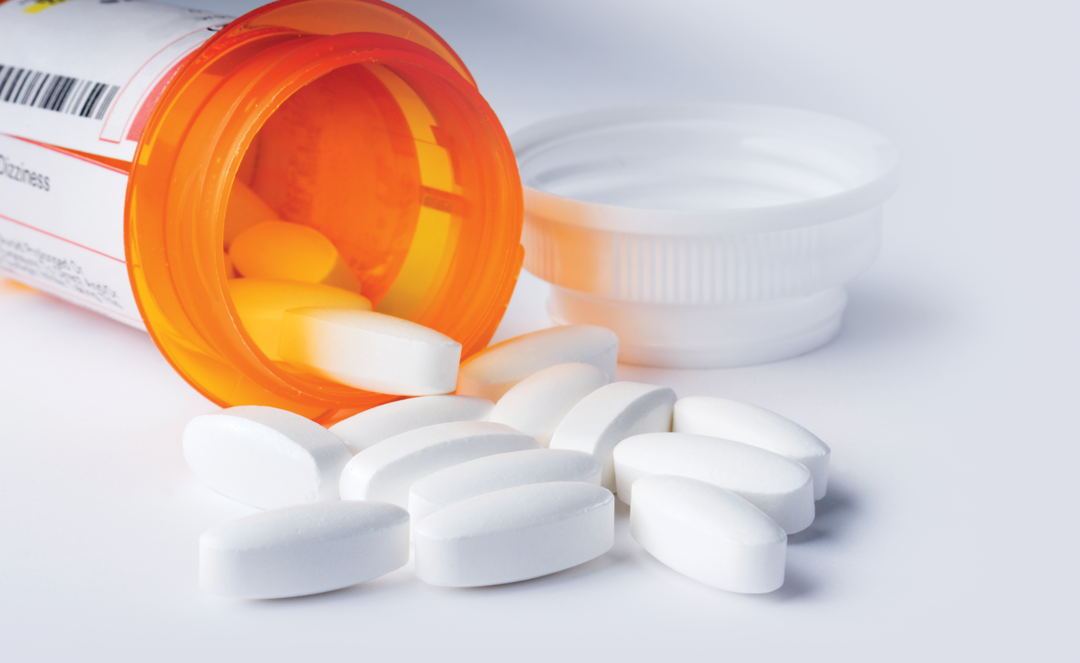BALTIMORE – At “America’s Opioid Epidemic: From Evidence to Impact,” a national summit conference at the Johns Hopkins University Bloomberg School of Public Health on Monday, Oct. 30, public health leaders and political leaders who have been involved in confronting drug abuse through their offices and appointed posts offered opinions on how the U.S. and its citizens can most effectively deal with the opioid crisis currently facing the country.
Drug-related deaths specifically connected to opioids are now the leading cause of death among Americans under 50. Approximately 64,000 people died in this country from drug misuse/abuse in 2016, and more than half of those were from opioids. Nearly 100 people per day die from opioid abuse.
In the Cullman area, according to records from the Cullman Police Department, opioid-based pills (repurposed prescription medications) collectively are the second most abused drug, behind methamphetamine. In a presentation to the most recent Citizens’ Academy, Cullman County Sheriff Matt Gentry stated that heroin and opioid pills are second to only marijuana statewide.
Just what are opioids?
Opioids are a class of drug which began with opiates, drugs derived from the opium plant, like morphine, codeine and heroin (a more potent form of morphine produced by the introduction of other chemicals), but now include many synthetic or semi-synthetic drugs like hydrocodone and oxycodone. Much of the heroin being sold on Cullman County’s streets has been mixed with fentanyl, a powerful synthetic opioid, greatly increasing the likelihood of overdose.
The class of drugs was primarily developed, from a medical standpoint, for the treatment of pain, but is also used to treat coughs, diarrhea and shortness of breath due to cancer or COPD. Due to opioids’ tendency to produce euphoria–intense feelings of happiness or well-being, they have long been used as recreational drugs. In Cullman County, there is a rapidly growing market for illegally repurposed prescription pills (either stolen medicines, or leftover prescriptions that were not properly discarded).
The detrimental effects of opioids include drowsiness (particularly dangerous when driving or performing potentially dangerous labor), respiratory depression (including, in some cases, complete stoppage of breathing), and even hyperalgesia–a condition in which the pain-killing drug can actually increase pain.
Summit recommendations
The summit conference released a 45-page report with numerous recommendations that fall under the following categories:
- Mandate prescriber Prescription Drug Monitoring Program registration and use. This involves tracking where manufacturers and distributors are shipping their products, and how much of them they ship; as well as tracking patients seeking prescriptions to ensure that one patient might not be getting multiple prescriptions for the same condition.
- Work with state medical boards to enact policies reflecting the Centers for Disease Control and Prevention’s (CDC’s) Guideline for Prescribing Opioids for Chronic Pain. This will ensure that people who actually need medications can get them without being harmed by them through overprescription.
- Inform and support evaluation research of Pharmacy Benefits Managers and pharmacy interventions to address the opioid epidemic. This involves working with corporate insurance managers to guarantee that proper policies are used for insurance-covered prescriptions.
- Secure funding for research to assess the effectiveness of innovative packaging and designs available and under development. This will help develop secure storage and packaging–which could include electronic monitoring, as well as disposal means.
- Provide clear and consistent guidance on safe disposal of prescription opioids; expand take-back programs. This involves education of patients on the dangers of opioids, and on the need for proper disposal of leftover drugs.
- Invest in surveillance of opioid misuse and use disorders, including information about supply sources. This will identify at-risk groups, and promote the sharing of information between agencies.
- Allocate federal funding to build treatment capacity in communities with high rates of opioid addiction and limited access to treatment. This will increase opportunities for treatment and admission to recovery programs.
- Partner with product developers to design naloxone formulations that are easier to use by non-medical personnel and less costly to deliver. Naloxone is marketed as Narcan, a drug that can offset the effects of opioid overdose. See Dr. Leana Wen’s recommendations below.
- Establish and evaluate supervised consumption spaces. This will likely be the most controversial measure for some. It assumes that some will continue to use, and calls for places to be established where users can access clean syringes and other means to make drug use less dangerous until those users can enter treatment.
- Avoid stigmatizing language and include information about the effectiveness of treatment and the structural barriers that exist to treatment when communicating with the public about opioid-use disorders. See more on this below.
What can be done right now?
The crisis, a problem long in the making, is going to require long-term solutions. According to the conference report, “There is no single solution to this grave public health threat, but we know where to start. First, we must acknowledge that opioid addiction is a disease that requires comprehensive treatment. Closing the path to addiction means addressing the overprescription of legal opioids and the proliferation of illegal opioids such as heroin and drugs laced with fentanyl. We also have to build the public health response so that families, first responders, and community groups have the support necessary to turn the tide on the epidemic, and in the meantime, don’t have to bear an impossible economic and emotional burden.”
Dr. Leana Wen, one of the Johns Hopkins summit panelists, offered three actions that people and communities can take immediately:
“Learn to use Narcan.” Narcan is a nasal spray which can immediately begin to counteract the effects of opioid overdose, and is legally available for non-prescription sale in Alabama. It can temporarily offset respiratory depression and extreme drowsiness; but is not considered a substitute for immediate medical attention, as respiratory depression can recur and Narcan can cause an addict to go into acute withdrawal. According to the Narcan website, “Since most accidental overdoses occur in a home setting, it was developed for first responders, as well as family, friends, and caregivers.” Around Cullman, CVS, Walgreens and Rite Aid pharmacies sell the product.
“Change our language; change the way that we speak about the issue.” Wen and other panelists argued that the stigma of addiction may be the biggest barrier to treatment for addicts, and they called for approaches to addiction that view it not as a crime, but as a disease–a medical and mental health issue, starting with the very way people talk about it. For some this will certainly be a controversial idea, as many addicts commit crimes to support their addiction; for instance, Sheriff Gentry said that drug users may comprise over 90 percent of street level drug dealers in Cullman County. The panel’s focus, though, was not on the other behaviors of addicts, but on the addiction itself.
“Think about what is in our wheelhouse.” Wen called on people and corporate entities to think proactively about what they themselves could do; saying to hospitals to act in the area of medicine and not leave it to other hospitals, and saying to employers to think about what they could do to help employees found to be facing addiction. This would translate into schools working on ways to educate students about drug use and sources of help for addiction, charitable groups thinking of ways to support local prevention and recovery programs, and churches seeking ways to minister in active ways to the spiritual needs of those addicted and those in danger of addiction.
The Tribune has begun work on a series in which local leaders in law enforcement, medicine, mental health and other fields will be asked talk about the drug crisis in our area from their professional perspectives, and share their opinions about what can be done. Look for upcoming articles.
For more information on Narcan, visit www.narcan.com.
For a complete report on the summit conference’s recommendations, download the PDF www.jhsph.edu/events/2017/americas-opioid-epidemic/report/2017-JohnsHopkins-Opioid-digital.pdf.
For citizens who have leftover or unwanted prescription medications, the Cullman Police Department or Cullman County Sheriff’s Office can assist in their proper disposal. Contact the CPD at 256-734-1434 or the CCSO at 256-734-0342.
Copyright 2017 Humble Roots, LLC. All Rights Reserved. Stock image.



























